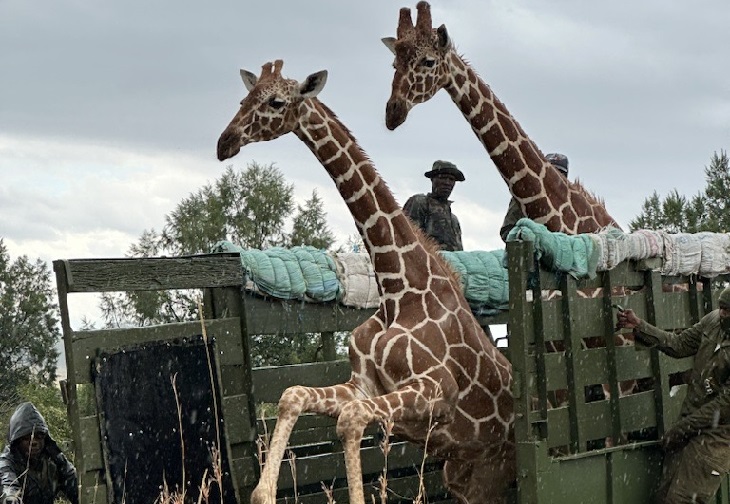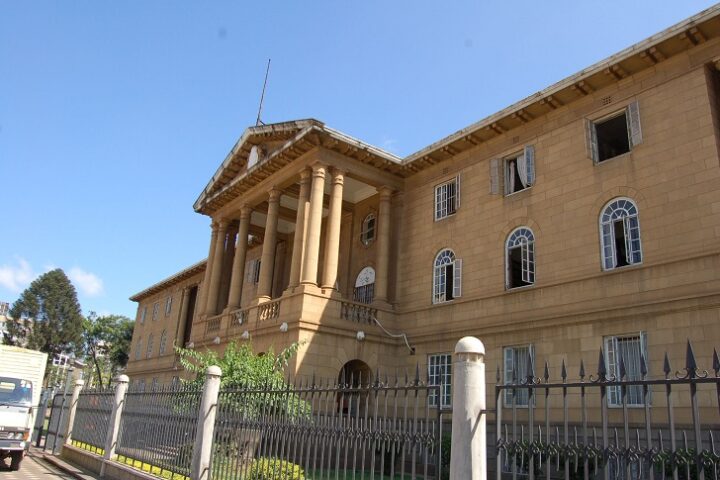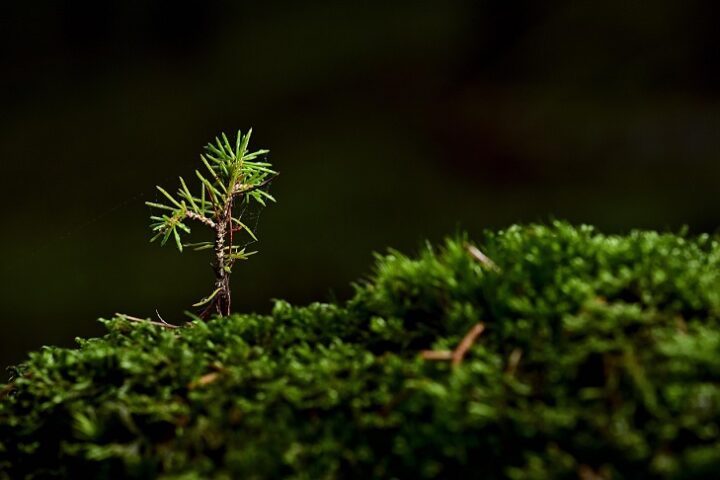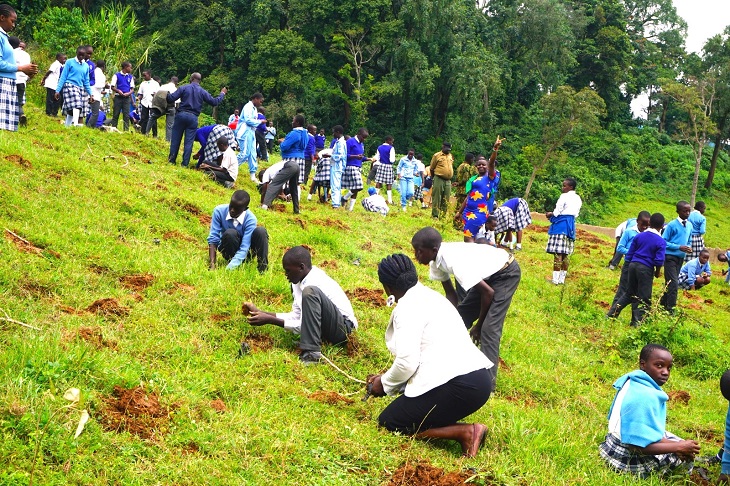Kenya Wildlife Service (KWS) and Mount Kenya Wildlife Conservancy (MKWC) in conjunction with Fairmont Mount Kenya Safari Club have announced the successful reintroduction of reticulated giraffes back to the Conservancy after 40 years.
The six giraffes (2 male and 4 female) were captured from Lolomarik Ranch and translocated into the wild at Mount Kenya Wildlife Conservancy. The reticulated giraffe is one of the four species of giraffe. Kenya has three out of four species; the Masai, Reticulated, and the Northern (Rothschild/Nubian) Giraffe.
Dr Robert Aruho, Head of Mount Kenya Wildlife Conservancy, says: “Reintroducing the reticulated giraffe after 40 years of absence at the Conservancy is an important step towards restoration of the ecosystem of Mount Kenya for future generations. We are aiming at rekindling giraffe conservation through community education as well, to empower local communities to benefit through opportunities that the conservation of such flagship species brings.
The reticulated giraffe used to inhabit the Mount Kenya Wildlife Conservancy until 1984. Their ‘homecoming’ is a good gesture of the strides that MKWC is making in the conservation and restoration of the beauty of the area and providing an opportunity for education among the visiting students and guests.
The number of giraffe have been declining throughout Africa, and the global population has declined by 30%. There are currently about 117,000 giraffes around the world. In the last 3 decades, Kenya was home to more than 71,000 Masai giraffes, the number has now declined to 45,400. Similarly, and more concerning, is that reticulated giraffe numbers in Kenya have declined by almost 50% in the last 35 years from 36,000 to only 16,000. These declines are largely driven by human factors particularly loss of habitat due to human development enterprises and land use conversion.
Giraffes are the tallest land mammals and are very conspicuous. Their height advantage means that they can utilize part of the plant matters beyond the reach of other wildlife. This means they also act as seed dispersal agents and pollinators as they feed.
With a strong focus on community conservation, education, and empowerment programs, sustainable natural resource management initiatives are being put in place by MKWC and Fairmont Mount Kenya Safari Club to build a circular economy on the slopes of Mount Kenya.
Veronique Delattre, General Manager of Fairmont Mount Kenya Safari Club comments: “Sitting within the conservancy makes us part of the conservancy’s mission. We are delighted to contribute, with the involvement of our guests. Together with the conservancy, we are working on a long-term view, where the circular economy is key not only to support the conservancy’s incentives, such as the Animal Orphanage but also to inspire our guests and future generations.”
As part of this innovative circular economy project, Fairmont Mount Kenya Safari Club, the hotel located within the Conservancy – allows guests from around the world to witness the beauty of the mountain, its forests, extraordinary glades, and wildlife, whilst supporting the Conservancy in its development. Guests now have the opportunity to observe the giraffes evolving in their lush, natural habitat, situated only a few meters from the hotel, either on foot, by bike, or on horseback.
This giraffe introduction and various innovative projects we have in the pipeline depend on the continued generosity of donors and guests of the Fairmont Mount Kenya Safari Club. Without this, we simply cannot continue our vital work. We urge not just Kenyan citizens, but also travelers and nature lovers – indeed, anyone who appreciates the lasting positive impact for both mankind and the natural world – to support us in our ongoing conservation efforts,” adds Dr. Robert Aruho, Head of Mount Kenya Wildlife Conservancy.
Planting trees is one such way that guests can show their support for the Conservancy. Each year, a mature tree produces enough oxygen for 10 people. Trees contribute to reducing the greenhouse effect by removing carbon dioxide from the air and releasing oxygen, whilst also providing habitat and food for the giraffes. Guests are encouraged to plant as many trees as will equal their carbon footprint, an activity the hotel will organize in the conservancy, together with the local community and with tree saplings bought from the Community Forest Association. Through this partnership with local communities, to date, MKWC has involved 3,000 community members in planting over 35,000 indigenous trees of a variety of species in Mount Kenya Forest.
Separately, guests who stay at Fairmont Mount Kenya Safari Club, whether coming for a retreat, wildlife tracking, mountain climbing, team building, conventions, or events, will all be able to contribute to the Conservancy’s conservation efforts, as all fees are reverted to MKWC.
Visiting Fairmont Mount Kenya Safari Club is truly a once-in-a-lifetime experience. This retreat, with its connection to wildlife, was born in the 1960s as the dream of Hollywood celebrity, William Holden. The extraordinary countryside manor and its lush, manicured park are home to more than a hundred species, including elephants, buffalos, endangered bongos, birds, gazelles, and warthogs.
Located and developed by MKWC, the Animal Orphanage is another key asset for wildlife conservation activities. The Animal Orphanage takes care of orphaned, abandoned, and injured wildlife, to release them back into their natural habitat once achieve optimal health and full recovery. In May 2023, the conservancy welcomed two lioness cubs who are benefitting from the expert care of a dedicated team of animal keepers and wildlife veterinarians. A striped hyena, buffalo calf, bushbuck, and other species have also recently been taken to the orphanage to benefit from the care of the experts on site.
Related Content: 85% Of Kenya’s Land Is Dry, Need For Robust Climate Resilience Strategies













